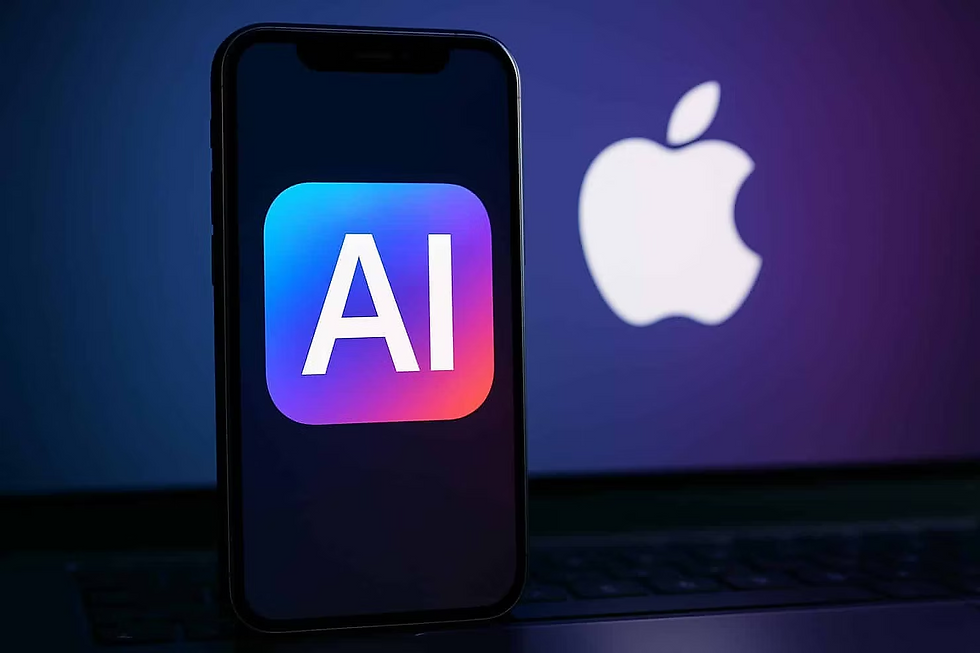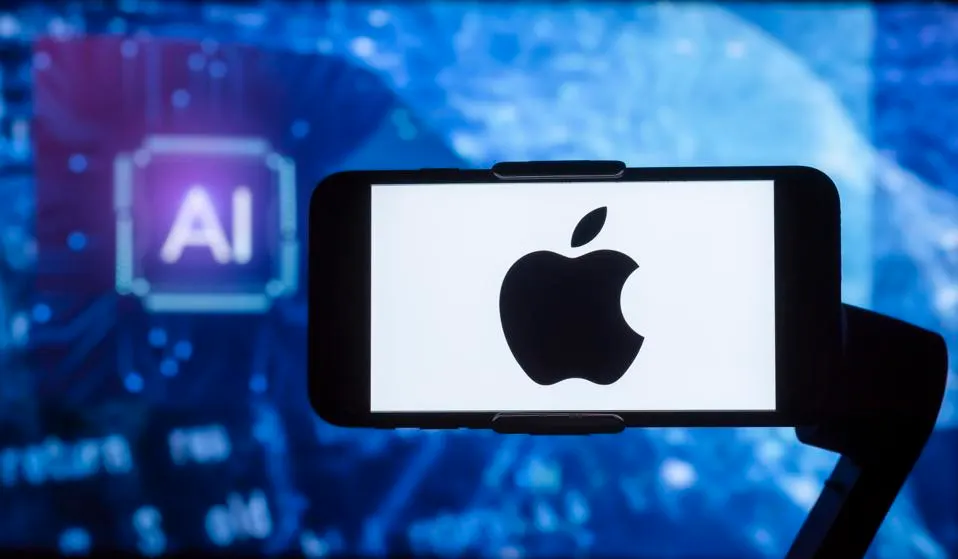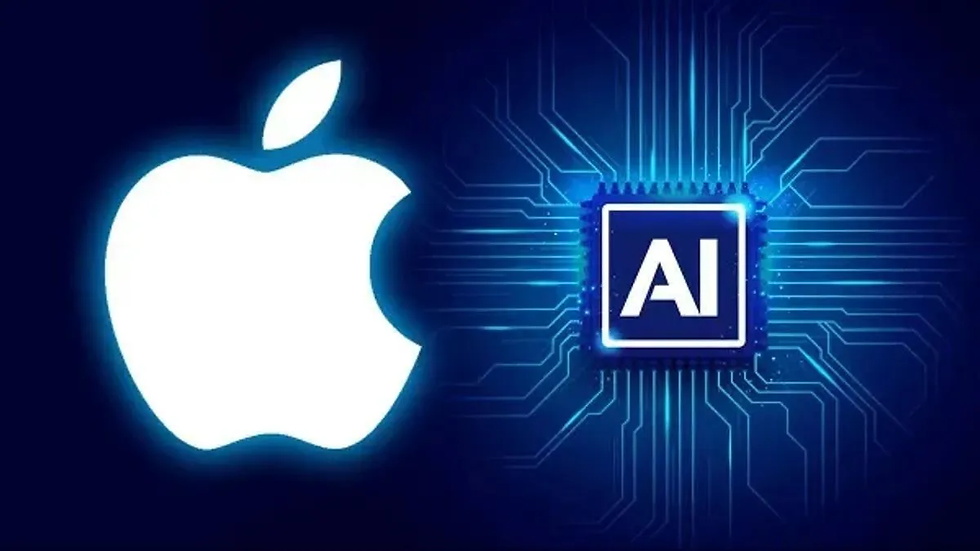Integrating On-Device AI: A Guide to Apple's Foundation Models for iOS 26
- Ethan Carter

- Sep 23
- 11 min read

Introduction — integrating on-device AI with Apple's Foundation Models in iOS 26
At WWDC 2025 Apple unveiled the Foundation Models framework as a core part of iOS 26, positioning on-device AI as a system-level capability for iPhones and the apps that run on them. The core promise is simple but consequential: developers can run Apple’s local foundation models on-device to enable faster inference, tighter privacy controls, and richer app experiences without mandatory cloud round trips. This reshapes expectations for mobile AI features that must respond instantly or operate offline.
Apple shipped developer tools and documentation alongside the announcement, and the company’s ML newsroom framed Foundation Models as elevating the iPhone experience in iOS 26. Since June 2025, public updates and early adopter reports through mid‑2025 suggest the framework is moving quickly from preview into production-ready workflows. The rest of this guide walks through what the framework contains, how it performs on modern Apple silicon, who can use it and when, how it compares to prior tools and competitors, and practical developer and user implications.
What the Foundation Models framework offers and how it fits into iOS 26

What’s included in the Foundation Models framework
At a high level, Foundation Models provides a documented set of runtime APIs and system integrations that expose on-device foundation models—text, vision, and multimodal—to apps. These models are designed to handle tasks like summarization, question answering, image understanding, and conversational assistants locally. Apple’s ML newsroom highlights how these capabilities sharpen Siri and app-level intelligence in iOS 26.
Developers call the framework to request model-backed inferences rather than bundling large models themselves. The runtime handles model selection, versioning, and optimized execution on Apple silicon, enabling richer app behavior without developers needing to implement low-level hardware acceleration code.
Developer controls and privacy-first defaults
Apple built the framework around clear developer controls. Apps run models in sandboxed contexts, and the framework exposes APIs for selecting model sizes, locking to specific model versions, and applying runtime constraints (for CPU/GPU/Neural Engine usage and memory budgets). Those choices let developers balance responsiveness, battery life, and memory use.
Privacy defaults favor on-device processing: user data and prompts are not sent to public cloud services unless an app explicitly bridges to a remote backend. Apple’s documentation and legal terms make clear acceptable-use and privacy norms for platform services. See Apple’s legal terms for platform rules and developer obligations when integrating system capabilities like Foundation Models: Apple’s legal and terms guidance for internet services.
Insight: Sandboxing and runtime constraints mean developers can build AI features that degrade gracefully on older devices, while users retain control over whether an app uses local models.
System integrations that change workflows
Foundation Models are not an isolated runtime—they are integrated into the iOS intelligence stack. The framework is designed to work alongside Siri and Core ML continuity features so apps can chain outputs into system-level behaviors (for example, a local summarizer that feeds a suggestion into an iOS share sheet or a photo captioner integrated with Photos analysis). Apple’s developer tools press release describes enhancements across SDKs that let native frameworks orchestrate model outputs with system features: Apple’s developer tools and technologies update.
Key takeaway: Foundation Models provide an end-to-end path for building fast, privacy-conscious AI features that integrate with the broader system intelligence capabilities in iOS 26.
Performance posture, architecture choices, and device-aware constraints
Low-latency on-device inference and measured responsiveness
Apple positions Foundation Models for low-latency inference, emphasizing that local execution dramatically reduces round-trip time compared with cloud models—critical for interactions that feel instantaneous or must work offline. Independent analyses and early app reports show measurable latency gains in sample workflows (for example, sub-second text summarization on modern iPhones versus multi-second cloud calls), underscoring the user-facing value of on-device execution. For a concise summary of early performance findings, see the InfoQ coverage of Apple’s approach and measured outcomes: InfoQ summary of Foundation Models performance.
Apple’s research group has published technical notes and updates that describe how models are architected and optimized for Apple silicon. Those materials explain parameter-efficiency strategies—such as quantization, sparsity-aware kernels, and runtime compilation for the Neural Engine—that make larger capabilities feasible within constrained mobile power and memory envelopes. See Apple’s research updates for detailed engineering context: Apple research updates on foundation models and optimizations.
Model architecture, benchmarks, and energy efficiency
While Apple has not published exhaustive layer-by-layer model blueprints for every deployed foundation model, independent technical analyses on arXiv provide peer-level benchmarks comparing throughput and energy efficiency. These write-ups and Apple’s own reports show consistent patterns: models tuned to Apple silicon favor parameter efficiency and runtime kernel optimization, trading some scale for responsiveness and lower energy per token or per inference.
Benchmarks illustrate differences between model sizes (small/medium/large) and how throughput scales across CPU, GPU, and Neural Engine backends. Developers can expect smaller models to be appropriate for always-on or frequent inference scenarios, while larger models produce higher-fidelity outputs but require more memory and power.
Resource budgets and device capability checks
Apple documents runtime constraints and how model selection maps to device capabilities. Apps can query the device to learn available compute tier, memory budgets, and whether the Neural Engine is available for a particular workload. This lets apps pick appropriate model sizes dynamically—for example, defaulting to a compact summarizer on an older iPhone while using a richer conversational model on the latest device.
Apple’s platform materials spell out these runtime checks and developer best practices. Practical implications include careful UX design around longer inferences (showing progress indicators), thermal management strategies, and fallbacks for background or battery-saving modes.
Key takeaway: Expect faster, more efficient inference on newer Apple silicon, and plan model selection with device-aware logic and graceful degradation for older hardware.
Eligibility, rollout timeline, and what it costs to use Foundation Models

Rollout timeline from WWDC to public app releases
Apple announced the framework at WWDC in June 2025 with developer betas immediately available. That public preview allowed early adopters to build and test features through the summer. By September 2025, media reporting and case studies showed developers shipping features using local models—evidence of a broad public rollout of iOS 26 and the accompanying developer toolchains. For an overview of how developers began using local models in production, see the TechCrunch reporting on early developer adoption: How developers are using Apple's local AI models with iOS 26.
Device and OS eligibility
Foundation Models require iOS 26 and supported devices; Apple’s documentation provides a device capability matrix so developers can query which models are feasible on a given iPhone. Model availability and real-time performance are explicitly tied to hardware tiers: the latest Apple silicon provides the best latency and energy characteristics, while older devices receive access to smaller, optimized model variants.
Developers should always implement device capability checks to select model size and runtime backend. This prevents poor UX experiences caused by choosing a model too large for the available memory or compute budget.
Cost, licensing, and distribution
Apple has bundled the Foundation Models framework and APIs into iOS 26 and the associated developer SDKs; there is no announced per-inference fee for calling on-device models. That said, Apple’s platform terms define acceptable use and privacy obligations for developers integrating system capabilities. For operational and legal guidance on how platform features may be used, consult Apple’s terms and legal guidance: Apple’s legal and internet services terms.
Distribution and model updates are managed through Apple’s platform mechanisms. While Apple supplies foundation models and updates, developers retain the ability to select versions and apply runtime constraints, subject to sandboxing and platform rules. There has been no public announcement of per-download or per-inference fees as of mid‑2025; however, developers should review platform licensing and distribution policies to ensure compliance.
Key takeaway: Integration costs are primarily developer time and engineering tradeoffs; Apple’s on-device approach shifts recurring inference costs from cloud bills to device resource management.
How Apple’s Foundation Models compare with earlier iOS tools and external competitors

Evolution from Core ML to managed, system-level foundation models
Core ML historically enabled apps to run machine learning models locally, but it left model shipping and version management largely to developers. Foundation Models extend that on-device focus by exposing larger multimodal capabilities and system-level integrations. Rather than only packaging a custom model into an app, developers can call into Apple-managed foundation models with versioning and system-managed updates. This marks a shift from model shipping to a managed model service that runs locally.
Where Core ML emphasized efficient mobile inference for models developers supplied, Foundation Models aim to provide a broader set of higher-level capabilities—summarization, image understanding, and multimodal reasoning—with system-level policies and integrations that make them reusable across apps.
On-device-first versus cloud-first tradeoffs
Apple’s approach prioritizes latency and privacy by default. On-device models reduce network dependency and exposure of user data to external servers, advantages for offline-first features and privacy-sensitive workflows. Contrast this with cloud-first solutions, which typically provide near-unlimited compute and the ability to serve enormous models or rapidly retrain with fresh data—advantages when scale or continuous model retraining is required.
Analysts note this tradeoff: on-device models favor responsiveness, user privacy, and offline functionality, while cloud models retain advantages for compute-heavy, data-centralized, or constantly updating AI services. For a balanced industry perspective on why this matters, see Computerworld’s analysis: Why Apple’s Foundation Models framework matters.
Market implications and platform dynamics
Industry watchers view Foundation Models as a strategic step toward owning the mobile on-device AI layer. This repositions Apple as a provider of managed foundation models tightly integrated with hardware and OS features, and invites comparisons with Android/Google and Meta initiatives that pursue different balances between on-device and cloud-first AI. Some commentators raise questions about potential ecosystem lock-in versus developer flexibility; Apple’s model versioning and sandboxing are intended to preserve developer control while protecting users and platform integrity. For a concise WWDC-focused take, see the EVInfo WWDC summary: WWDC announcement summary and implications.
Key takeaway: Foundation Models represent a platform-level bet on on-device AI—fast and private, but with intentional limits compared to cloud-scale alternatives.
Real-world usage, developer impact, and early case studies
Early developer adoption stories and use cases
By September 2025, reports highlighted concrete examples of apps using local foundation models for practical features: offline text summarization in note-taking apps, on-device photo understanding for privacy-preserving image search, and local conversational assistants that respect user data residency. TechCrunch’s developer reporting documents these early deployments and the developer workflows around them.
Developers describe faster iteration cycles because they can test model behavior directly on devices without waiting for cloud deployments. That reduces feedback loops and accelerates UX tuning. However, teams also report new constraints—primarily around model size, thermal behavior, and battery tradeoffs—that require careful engineering and product design.
Developer tooling, samples, and community learning
Apple released SDKs, sample code, and research notes to lower the learning curve. The company’s research updates contain implementation patterns and optimization techniques that show how to balance accuracy and efficiency. For concrete research guidance, review Apple’s published research updates on foundation models.
Community repositories and developer forums have begun to populate with examples for common tasks—summarizers, image annotators, and multimodal assistants. Early community feedback highlights a predictable ramp-up period: teams with prior on-device ML experience adopt the framework more quickly, while generalist app teams benefit from Apple’s samples and the growing body of independent analysis.
Insight: Real-world adoption is less about training new models and more about thoughtful model selection, UX design to mask longer inferences, and careful battery/thermal budgeting.
Practical user impact and tradeoffs
Users benefit from noticeably faster responses for many AI tasks, better offline capability, and clearer privacy assurances when processing stays on-device. That said, developers must make tradeoffs: choosing smaller or quantized models reduces fidelity, and running larger models more often can increase battery use. Product teams that weigh these tradeoffs up front produce more durable features.
Key takeaway: Early production deployments show rich user value, but demand careful engineering to manage device constraints and deliver consistent UX across hardware tiers.
FAQ — practical questions about integrating on-device AI with Foundation Models

Which iPhones support Foundation Models and iOS 26?
Check Apple’s device capability guidance in the iOS 26 developer documentation; model availability and recommended model sizes scale by device capability, so apps should query the runtime to select appropriate models. See Apple’s iOS 26 ML announcement for platform details: Apple elevates the iPhone experience with iOS 26.
Do developers pay per inference or for model downloads?
As of mid‑2025, the framework and runtime APIs are included in iOS 26 SDKs and no public per‑inference fee has been announced; consult Apple’s legal and platform terms for official distribution and usage policies: Apple legal and internet services terms.
How do foundation models affect app size and battery life?
Model selection and runtime constraints are tunable. Larger models can increase memory footprint and battery use; Apple documents memory budgets and device capability checks so apps can choose appropriately. For guidance on balancing fidelity and efficiency, see Apple’s technical updates: Apple research updates on foundation models.
Are user prompts and data sent to Apple servers by default?
Apple emphasizes on-device processing and privacy-first defaults; user data and prompts are processed locally unless an app explicitly sends data to a remote backend. Developers should read platform privacy docs and Apple’s legal terms for precise obligations: Apple’s platform announcement and privacy posture.
Can I run custom models or only Apple-supplied ones?
Apple supports developer model selection and versioning within the framework, subject to sandboxing and distribution rules. Consult the SDK docs for import paths, allowed model formats, and runtime constraints: Apple developer tools and technologies update.
How does Foundation Models integrate with Siri and system features?
Foundation Models are part of the iOS intelligence stack and can be chained into system features—Siri, suggestions, and Core ML continuity—so app outputs can feed system workflows. Apple’s platform materials outline these system integrations: Apple ML newsroom on system-level intelligence.
Where can I find benchmarks and deeper technical analyses?
Apple’s research updates provide engineering detail and optimization notes, while independent analyses on arXiv and InfoQ include benchmarks and throughput comparisons: Apple research updates, arXiv technical analysis, and InfoQ coverage of performance.
Where Foundation Models in iOS 26 take mobile AI next
Apple’s Foundation Models mark a practical turning point: production-ready on-device AI that treats local models as first-class system resources. For users this means faster, more private AI features; for developers it creates new possibilities and fresh engineering obligations. In the coming months and years, expect several clear trends to unfold.
First, more apps will ship AI-driven features that assume instant or offline operation—note-taking with local summarization, photo apps that understand content without server uploads, and assistants that can act without a network connection. Early developer reports suggest these features significantly improve perceived responsiveness and user trust when data remains on-device; see TechCrunch’s early adopter stories for concrete examples: TechCrunch on developers using Apple’s local AI models.
Second, hardware matters. Apple’s optimizations for its silicon will continue to widen the performance gap between newer and older devices, so product teams must treat model selection as a first-order design decision. Apple’s research notes and independent benchmarks show how parameter-efficiency strategies and kernel tuning affect energy and throughput; teams that internalize those patterns will ship better experiences. For deeper technical material, consult Apple’s research updates and peer analyses: Apple research updates and arXiv analysis.
Third, the platform balance between managed convenience and developer freedom will shape the ecosystem. Apple’s model versioning and system-level controls promise consistency and privacy, but developers will naturally compare those benefits with the flexibility of custom cloud models or third-party toolchains. Industry coverage suggests this is a strategic play by Apple to own the mobile on-device layer while maintaining developer productivity: Computerworld on why this matters.
Finally, uncertainties and tradeoffs remain. On-device models will not replace cloud models for every use case—tasks requiring constant retraining on huge corpora or massive parameter counts will still favor cloud compute. Likewise, battery, thermal, and memory tradeoffs will continue to constrain feature design. But the practical guidance is consistent: test on target devices, prioritize graceful degradation, and lean on Apple’s SDKs and sample code to reduce integration friction.
If you’re a developer, start by validating your use case against device capability checks, instrument energy and latency in real user scenarios, and evaluate how model choice affects privacy and UX. If you’re a product leader, consider where low-latency, offline-first AI can create real user value and plan roadmaps that account for hardware diversity.
Final thought: Foundation Models in iOS 26 make on-device AI an operational reality, not just a demo. As the next updates arrive and the ecosystem matures, expect a new generation of mobile experiences that treat privacy, latency, and seamless integration as table stakes—and that will reward teams who design with devices and users at the center.

